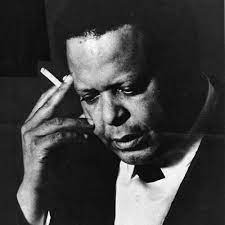
Three Wishes
Jaki Byard was given the opportunity by Nica to express his three wishes and his response was:
- “If I could be financially able to do anything I wanted to, I’d have two or three clubs. I wouldn’t want three wishes, I’d only need one. Gee, that’s the only wish I ever had! To have three or four clubs, in the same New York vicinity, and let the clubs run themselves. That’d take care of all the different types of music. Does that make sense? That’s my only wish and I think that’s good enough.
More Posts: baroness,history,instrumental,jazz,music,pannonica,piano,saxophone,three,wishes
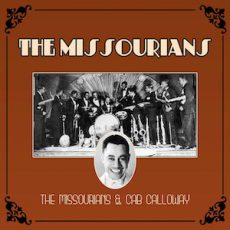
Daily Dose Of Jazz…
William Thornton Blue was born on January 31, 1902 in St. Louis, Missouri and grew up playing in local bands in his hometown, where his father was a part-time music instructor.
He played with Wilson Robinson’s Bostonians, a territory band, where he was introduced to the rigors of the road. In 1924 he worked with Charlie Creath, then went to New Orleans, Louisiana and joined Dewey Jackson in the middle of the 1920s. This association eventually took Blue back to St. Louis as part of the touring schedule but Blue didn’t stay long. Heading to New York City later that decade he had an extended stint working with Andrew Preer’s Cotton Club Orchestra. This led to a European tour as a member of Noble Sissle’s ensemble.
Remaining for a brief time in Paris, France he collaborated with bassist John Ricks. When Bill returned to New York City, he joined The Missourians, led by Cab Calloway, then worked with pianist Luis Russell.
Due to failing health he played very little in the late Thirties and afterwards. Clarinetist and alto saxophonist William Thornton Blue, sometimes credited as Bill Blue, transitioned in 1968 after spending the last several years of his life in a New York sanatorium.
More Posts: clarinet,history,instrumental,jazz,music,saxophone
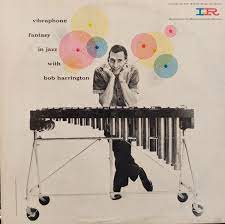
Daily Dose Of Jazz…
Bob Harrington was born Robert Maxon Harrington in Marshfield, Wisconsin on January 30, 1912. He played piano with Charlie Barnet in the early 1950s and worked with both Red Nichols and Bud Freeman during that decade as a drummer.
On vibraphone, he played with Georgie Auld, Buddy DeFranco, Vido Musso, Ben Webster, Ann Richards, and Harry Babasin’s Jazzpickers. He released one solo album, Vibraphone Fantasy in Jazz, on Imperial Records in 1957, which is now a collector’s item.
Vibraphonist Bob Harrington, who was adept on drums and piano, transitioned on August 20, 1983 in Kona, Hawaii.
More Posts: bandleader,drums,history,instrumental,jazz,music,piano,vibraphone
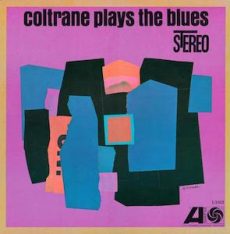
Requisites
Coltrane Plays The Blues ~ John Coltrane | By Eddie Carter
The weather outside is cold, dreary, and rainy, with a thick and impenetrable fog enveloping the area, making it a perfect day to enjoy the blues. Submitted for your consideration from the library is Coltrane Plays The Blues (Atlantic 1382/SD 1382) by John Coltrane. It’s a quartet date that hit the stores in 1962 but was initially recorded at the 1960 session that produced My Favorite Things and perfectly fit the bill for this morning’s discussion. The ensemble is John Coltrane on soprano sax (tracks: A2, B2) and tenor sax (A1, A3, B1, B3), McCoy Tyner on piano (A1, B1 to B3), Steve Davis on bass, and Elvin Jones on drums. My copy is the 1972 Japanese Stereo reissue (Atlantic P-7504A) by Warner-Pioneer Corporation.
Side One starts with Blues To Elvin by Elvin Jones, a tasty dish of soul food that McCoy and the rhythm section begin making the listener feel at home in the introduction. John serves the song’s appetizing melody and prepares a luscious main meal in the opening statement. McCoy enters next with a delicious interpretation, then John’s final course is a succulent dessert made all the more delectable by the trio’s supplement. Blues To Bechet, written for Sidney Bechet, is the first of five by John Coltrane, placing the leader on soprano sax, backed by just Davis and Jones. The threesome opens with a relaxing melody. Coltrane begins the song’s only solo with an easy swing that blossoms into one of his most innovative improvisations preceding a soft climax.
The pace quickens for the first side finale, Blues To You. John’s back on tenor and backed again by Steve and Elvin for this fast-paced tune. Coltrane grabs you from the get-go and doesn’t let go until his brief exchange with Elvin leads the listener into the climax. Side Two begins with the quartet back in complete form for his third original, Mr. Day. Davis and Jones set the groove in motion, segueing into Coltrane leading the charge on the melody. The leader continues to wail on an energetic opening statement. Tyner takes the listener on an exuberant joyride in the second interpretation. Coltrane adds an incredibly satisfying exclamation ahead of the theme’s reprise, and Davis closes the song as he began.
Mr. Syms slows the pace down for the quartet to take it easy during the opening and ending theme with John back on soprano sax. In between, McCoy has the solo spotlight and finds a comfortable groove that builds to a perfect climax. The foursome closes the album with Mr. Knight, an easy-flowing tune that displays an interesting mixture of African and West Indian music in its structure. After the group establishes the melody, Coltrane draws the listener to a few fascinating elements in the first reading. Tyner takes the reins next and makes a compelling point that paces well against the rhythm section preceding Coltrane’s reprise of the theme and the rhythm section’s slow disappearance into nothingness.
Nesuhi Ertegün supervised Coltrane Plays The Blues, and Tom Dowd was the recording engineer. The sound quality is splendid, with a clean, crisp, well-balanced soundstage. If you’re a fan of John Coltrane and in the mood, for an album to enjoy at the end of a long day or week, I invite you to check out Coltrane Plays The Blues on your next vinyl shopping trip. It’s an enticing invitation to explore and enjoy an overlooked but fascinating album that shows his lyrical side and is well worth the price of admission for a spot in your library!
~ My Favorite Things (Atlantic 1361/SD 1361) – Source: Discogs.com © 2023 by Edward Thomas Carter
More Posts: choice,classic,collectible,collector,history,instrumental,jazz,music,saxophone
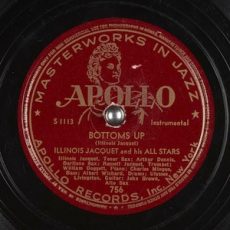
Daily Dose Of Jazz…
Ulysses Livingston was born on January 29, 1912 in Bristol, Tennessee and played in the band of the West Virginia State College. He began his professional career in music in the Horace Henderson band as a roadie, or, as Henderson called them, valet.
After his period with Henderson he played guitar in carnival bands on traveling road shows. By the middle of the 1930s he began to get jazz gigs with Lil Armstrong, Frankie Newton, Sammy Price, Coleman Hawkins, and Benny Carter.
Moving to New York City, Ulysses accompanied Ella Fitzgerald on tour and on record. He served briefly in the military during World War II, but returned to jazz playing on the West Coast in 1943. He played with Cee Pee Johnson in Hawaii four years later.
Alongside his guitar playing, Livingston also sang with the Spirits of Rhythm, and led a group called the Four Blazes. From the 1950s he did freelance work with West Coast jazz musicians and also became active as a record producer.
He would go on to record with the Varsity Seven, Jazz At The Philharmonic, Illinois Jacquet, Rex Stewart’s Big Eight, Pete Johnson and numerous others. Guitarist Ulysses Livingston, who also played and recorded on electric bass guitar, transitioned on October 7, 1988 in Los Angeles, California.
More Posts: guitar,history,instrumental,jazz,music




